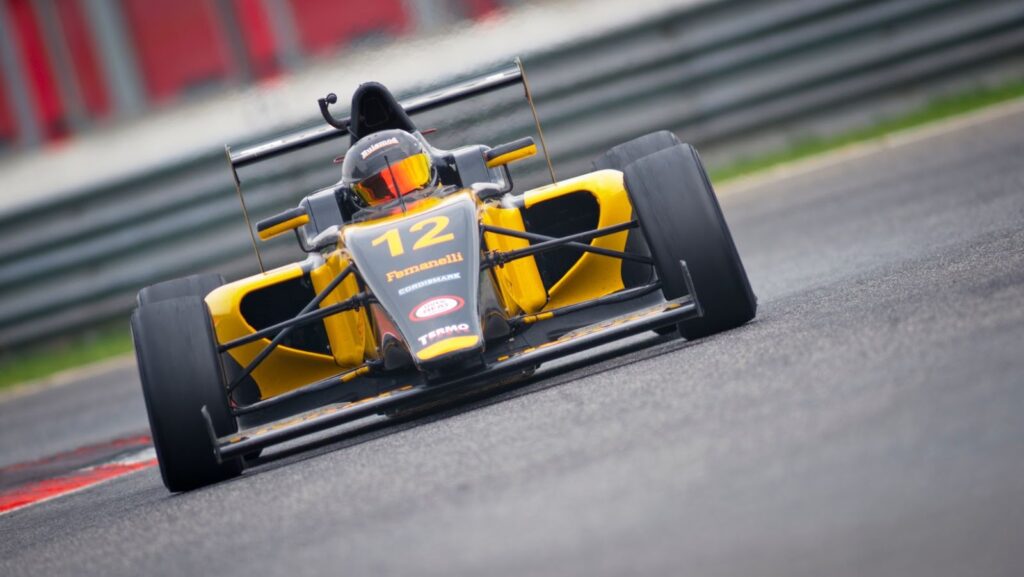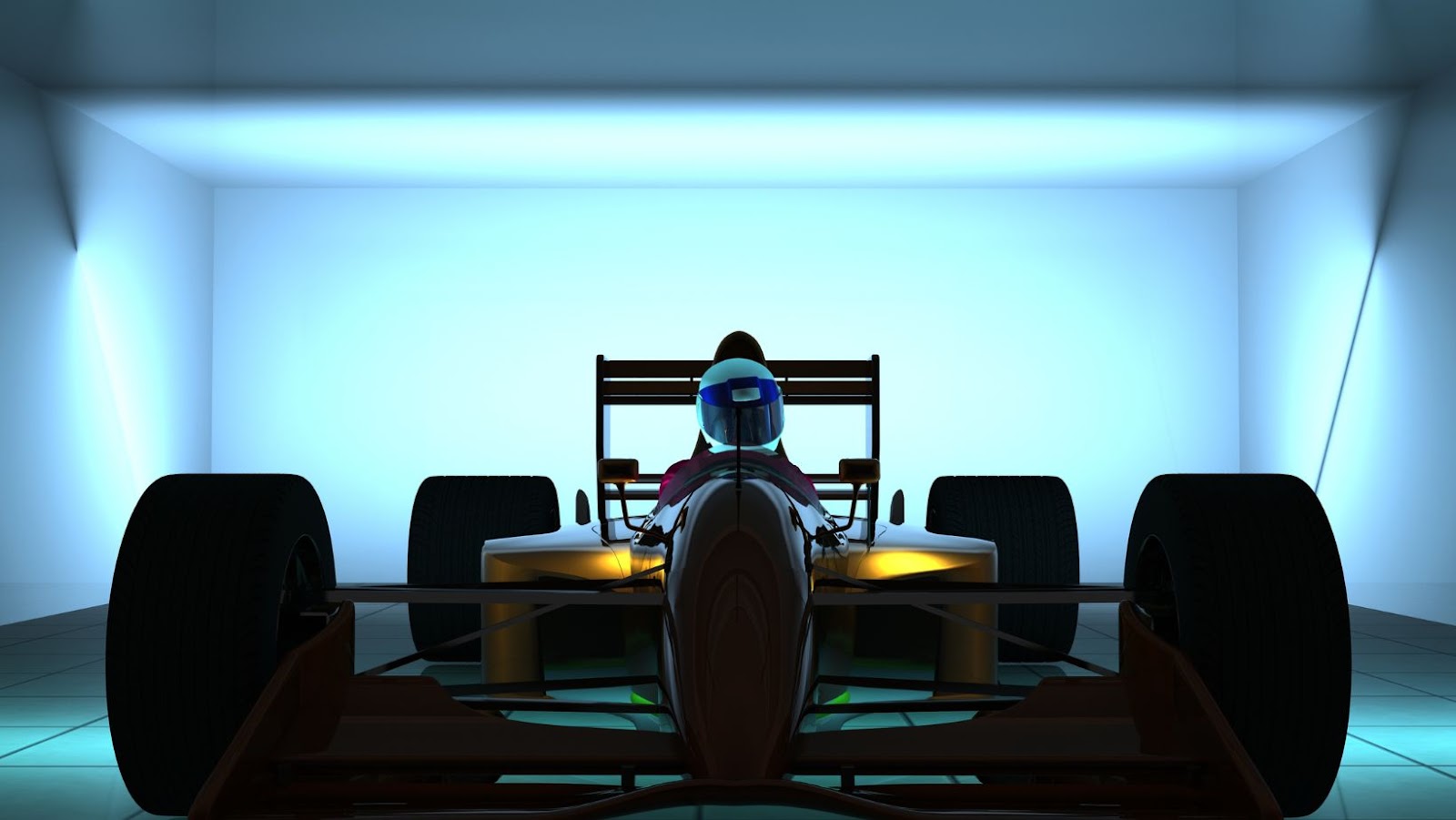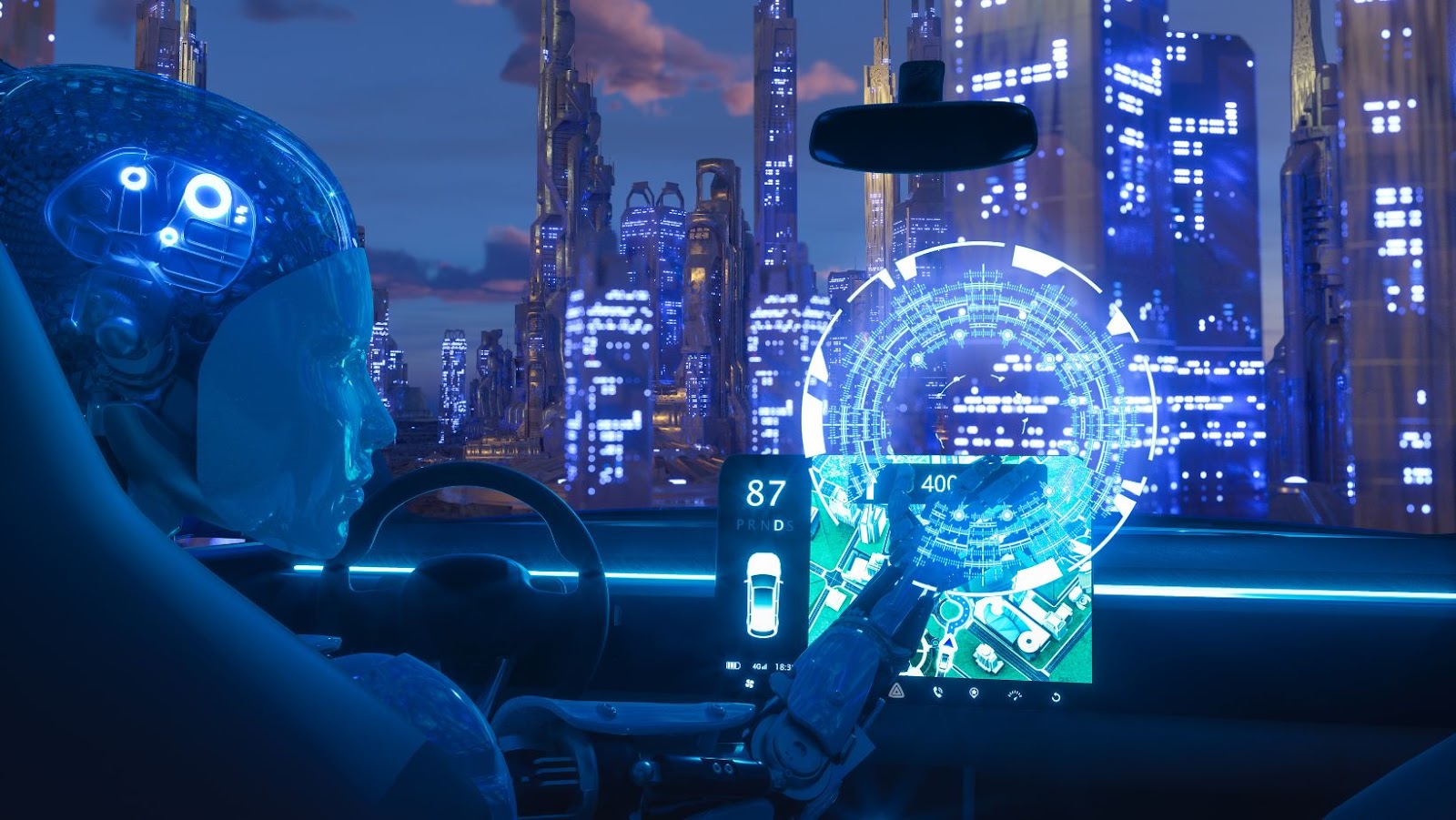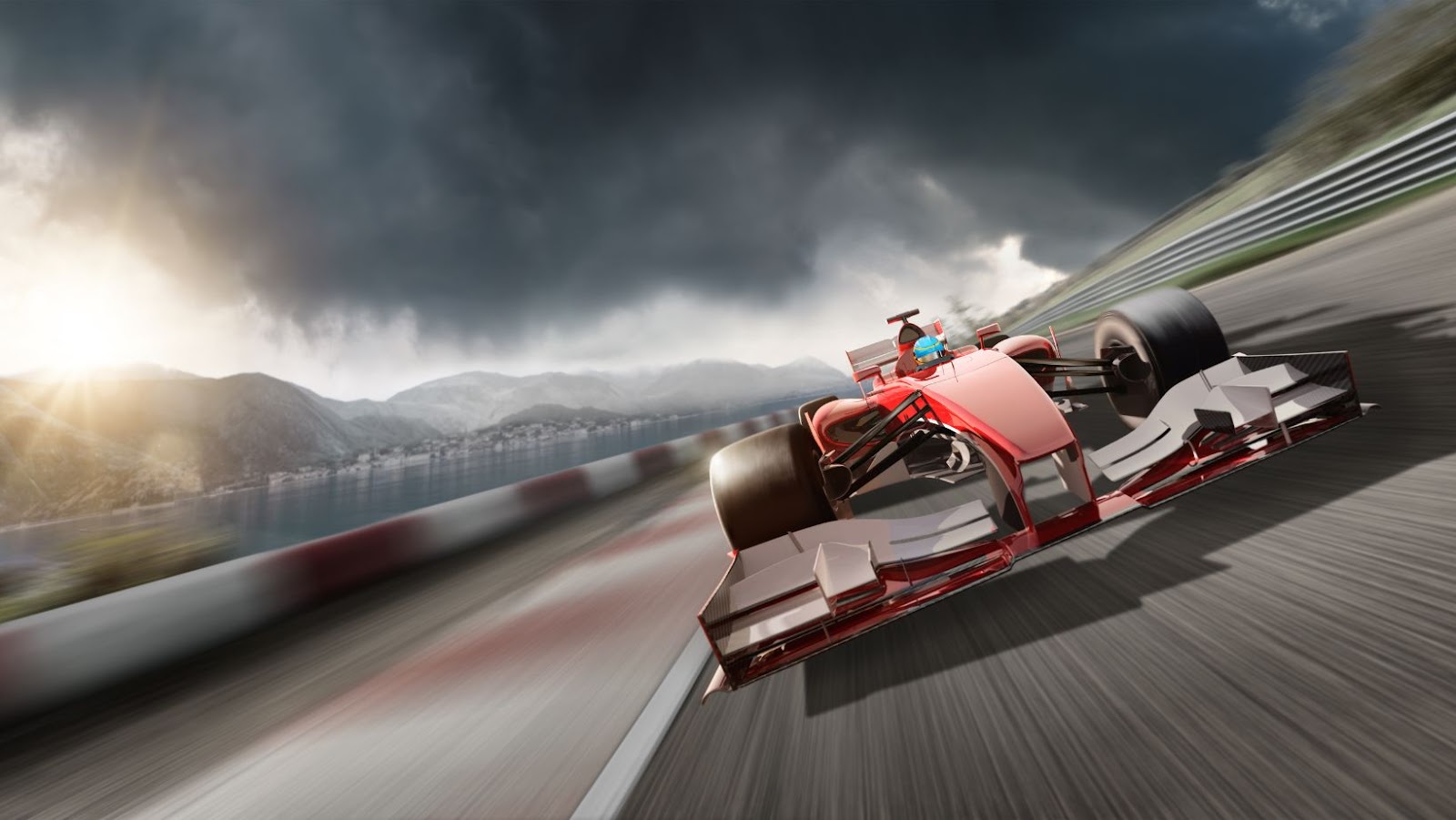

You want to know how AI can revolutionize car racing?
Sony’s AI is driving the race car like a champ and paving the way for an efficient and advanced racing experience. Discover now how this technology can make a difference and transform the way we see car racing!
Sony’s AI Drives a Race Car Like a Champ
Sony recently announced the development of a prototype for an autonomous racecar using artificial intelligence (AI) technology. With the potential to revolutionize not only the sport, but transportation more broadly, Sony’s work demonstrates how rapidly emerging technologies impact traditional industries.
Sony’s AI system is designed to enable cars to do more than just autonomously drive around the track – they can now identify the track position of other cars and learn from their mistakes. The self-driving cars also incorporate advanced sensors such as cameras, radar and lidar (Light Detection and Ranging) systems that can detect objects in their path with relative precision. Using these sensors, self-driving cars can process data with an improved level of accuracy versus manual driving. This technology also allows for faster speeds and safer driving overall as opposed to human racing on traditional closed tracks.
The utilization of AI in car racing marks a major milestone in technological advancement and could drastically transform transportation systems worldwide. By introducing AI into car racing, Sony has discovered one way to use this dynamic technology to its greatest effect – offering new possibilities for greater efficiency and safety on tracks worldwide.
The Benefits of AI in Car Racing
In recent years, the use of Artificial Intelligence (AI) has increased in car racing. From enhanced vehicle performance to analytics-driven race strategies, AI is revolutionizing the sport by making it more efficient and safer.
One of the most notable benefits of AI in car racing is improved vehicle performance. AI-based computer vision techniques detect and analyze real-time data sensors produce on each car. This means drivers can get a better understanding of their vehicles’ performance and make adjustments during a race to improve efficiency and reduce risks caused by unexpected breakdowns or incidents.
Another major benefit is speedier race strategies powered by analytics. Smart algorithms are being used to gain insights into different sections of a track and competitor behaviors, allowing for quicker decisions on when to pit, accelerate or overtake other cars. Additionally, these insights can be shared with other drivers to increase strategic velocity throughout an entire team – adding yet another layer of efficiency gains.
Finally, humans are no longer the only ones behind a steering wheel with some AI powered autonomous cars increasingly becoming capable of entering the track and competing with human drivers in certain conditions – reducing risk and improving safety like never before. As technology advances, new possibilities await that may further revolutionize car racing at every level.

How AI is Making Racing More Efficient
The world of car racing is getting faster and more competitive than ever. With modern technologies such as artificial intelligence (AI), drivers can make decisions faster and process data on the fly to stay ahead in the field. AI has allowed teams to find new ways to practice, strategize, and optimize performance while keeping their cars running under precise settings that favor optimum speed and efficient fuel consumption.
Using AI technology like deep learning algorithms, race teams can access real-time information feedback on car performance to adjust accordingly during races. This allows them to make better decisions, save time when refueling or flipping tires, and easily determine what adjustments should be made in car setup and gear selection before each race session. Moreover, strategic planning is enabled through AI by predicting the conditions for a particular track which allows for strategies based on these predictions.
Sony’s AI technology is being used with great success across multiple types of racing by providing valuable insights such as tire temperature data or achieving superior uptime in pit stop measurements compared to traditional data acquisition systems. This advanced ability helps teams shave fractions or even seconds off their lap time making all the difference when competing at the highest levels.
AI-Assisted Racing Strategies
AI technology can help drivers and teams to manage and optimize their performance during a race. It can provide insightful data on drivers’ habits such as their brake style, reaction time and top speed. By analyzing the data, AI-driven algorithms can recommend the best changes to a driver’s driving strategy to improve their lap times, fuel efficiency or any other performance aspect. This can be invaluable in saving time and money for race teams who are constantly looking for new ways to optimize their performance.
AI-assisted racing strategies are being adopted by more and more teams and drivers due to the potential of increased safety and speed. AI-powered cars can detect when a car is underperforming or oversteering ahead of time rather than reacting only after an incident, allowing for prevention rather than reaction. Many teams have AI-enabled systems that monitor driver performance such as average speed during particular laps, response times in difficult corners or tracks, and even measures like how often the driver brakes too hard which could damage the tires or engine components over long stretches of racing.
AI is essential in predictive analytics. It allows drivers and team members to see what changes need to be made so they can test various options quickly before deciding on one strategy that works best for them. AI assists with figuring out optimal strategies given various conditions so that each team member can perform at their maximum potential when out on the track.
The Challenges of AI-Driven Racing
AI-driven car racing has created a compelling challenge to develop systems that can not only improve driving performance, but also reduce the risk of accidents and other dangerous situations. To tackle this challenge, engineers and developers are utilizing artificial intelligence (AI) technologies to create smarter and safer driver assistance systems.
The most common AI-driven applications in Formula 1 have been designed to help drivers cut their lap times by using predictive algorithms to identify areas where more time can be saved. By taking input from sensors on the track and analyzing data from past races, these algorithms can accurately predict when it is best to brake, corner or accelerate. This allows drivers to better optimize their speed and consistency on the track. Additionally, AI-driven car racing helps minimize human error by proactively correcting mistakes made by drivers or offering assistance during challenging situations on the track.
AI technologies are also helping streamline operations by improving organizational activities such as scheduling races, inventory management, safety compliance, asset utilization and performance optimization. For example, AI solutions can provide valuable insights into race conditions that were previously difficult or impossible to detect with manual processes alone – enabling teams to make informed decisions faster with fewer resources. Furthermore, modern AI solutions are capable of analyzing multiple sources of data in real-time and providing actionable feedback for improved race planning and strategy execution – reducing total race time while at the same time enhancing safety for those involved in the sport.

Safety Considerations for AI in Racing
AI technology in motorsport brings a host of new safety considerations that engineers and race officials have to take into account. As AI becomes more deeply entrenched in the sport, it is expected that certain standards and protocols will be established to reduce the chance of anything going wrong.
AI cars must remain within the speed limits on track and adhere to protocols set by race officials. Any computer-controlled car is also monitored by its engineers who control its systems while they are running on the track, paying close attention to data-streams and commands being sent. This allows them to intervene quickly should anything go awry on track.
The sensors fitted onto cars are also vital for ensuring safety; during races these can detect incidents such as contact with other cars, sudden braking or object avoidance. The data from these sensors provides the navigational information needed for autonomous vehicles to make decisions between critical sequences such as turning and navigating obstacles or competing against other cars. Real-time mapping and proper calibration of navigation systems can help with racing accuracy and crash prevention, since any potential pitfall can be identified in advance with this type of technology.
Moreover, automakers are fitting visual cameras which help AI cars identify objects ahead on track – lane markings, kerbs, barriers – allowing them not only greater control but improved safety when it comes to negotiating tight layouts or narrow corners. With so many vehicles out there on the same stretch of track at any one time, this kind of accuracy could save lives in extreme cases.

The Future of AI in Car Racing
In the increasingly competitive world of car racing, a reliable and efficient horsepower is the only way to leave other drivers in the dust. To stay at the top of their game, race teams must employ complex strategies to stay ahead — with many turning to artificially intelligent (AI) systems for assistance. Sony’s AI technology plays an important role in increasing efficiency and improving performance on the race track.
Sony’s AI technology is used in multiple ways including data gathering, model construction, testing and optimization—all essential to creating an efficient and successful car racing program. Data gathering involves collecting information such as wheel speed, engine temperature and fuel metrics so racers can determine where they stand alongside their competition—and figure out how best to continue optimizing performance; model construction involves employing machine learning techniques to derive predictive models from collected data; testing requires comparison between actual results generated from the track versus predicted outcomes based on models created; finally, optimization translates sophisticated objectives into concrete decisions that racers must make to achieve improved results.
This AI-driven science of car racing has enabled drivers to save valuable time calculating distances between locations, estimating gas mileage and monitoring wear-and-tear on tract parts without interruption from equipment failure or other technical complications. By optimizing performance with accurate predictions through dynamic models built with machine learning techniques powered by Sony’s intelligent AI technology — drivers can remain one step ahead by planned interventions that are most beneficial for their team while incorporating feedback from previous laps or races into new experiments.
Conclusion
In conclusion, Sony’s AI technology is making car racing more efficient than ever before. By leveraging data processing capabilities, AI can optimize race car performance faster than manual processes. It’s continually improving automotive engineering, from engine analysis and optimization to optimized pit crew management. These advancements will continue to ensure that races remain competitive and exciting while pushing the boundaries of automotive engineering further than ever before.
As AI capabilities develop and become even more powerful, it will be interesting to see how racers can use them.










